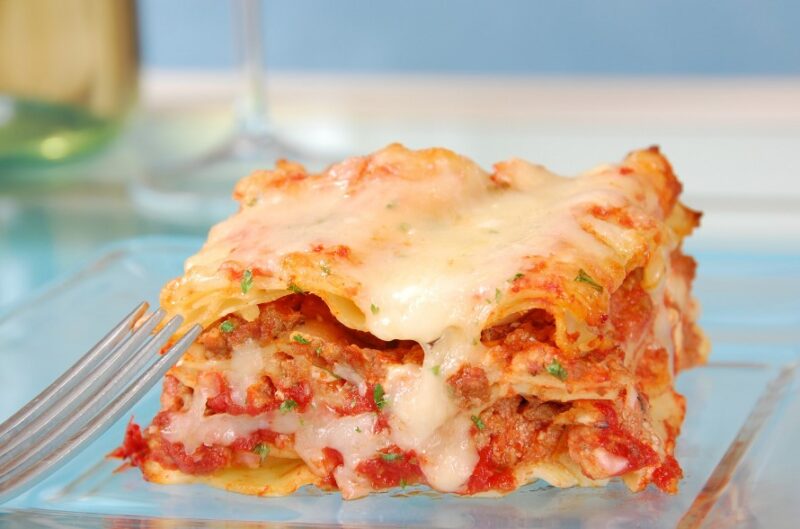What exactly makes a dish more than just a meal and elevates it to the status of ‘comfort food’? This term often conjures up images of hearty, indulgent dishes, but its essence goes far beyond mere ingredients. It embodies a sense of warmth, nostalgia, and solace, rooted deeply in personal and cultural experiences.
While one person might find solace in a steamy bowl of mac and cheese, another might turn to a fragrant biryani or a simple, yet satisfying, bowl of congee. This diversity in dishes reflects the vast tapestry of traditions and personal histories that shape our food preferences.
The Psychology of Comfort Food
Why do certain dishes have the power to make us feel better during tough times? The answer lies deep within our psychology and the complex relationship we share with food. Often, these dishes are more than just a blend of ingredients; they are imbued with memories and emotions.
- Emotional Association: Many of us turn to certain foods during moments of stress, sadness, or even celebration. This is because these foods are often linked to positive memories, such as family gatherings, childhood, or cultural festivities. A bite of a particular dish can transport us back to these happier times, providing a sense of comfort and stability.
- Stress Relief: Studies have shown that indulging in favorite dishes can trigger the release of feel-good hormones like dopamine. This biochemical reaction creates a sense of pleasure and relaxation, which can be particularly soothing during stressful periods.
- Cultural Significance: The dishes we consider comforting are largely influenced by our cultural background. For instance, while a warm bowl of soup might be comforting for someone from a colder climate, a spicy curry might be the go-to comfort food for someone from a tropical region.
- Sensory Experience: The experience of eating these foods— the aroma, taste, texture—also plays a crucial role. It’s not just about the flavor; it’s about how the experience of eating these foods makes us feel.
- Nostalgia and Memory: Often, the foods we crave are those we have a historical connection with. They might be dishes our parents made or ones we enjoyed during significant life events. This nostalgia is a powerful force, making these foods emotionally comforting.
Comfort Food Around the World
Exploring the diverse range of comfort foods across the globe reveals a rich tapestry of cultural traditions, regional ingredients, and unique flavors. Each country or region has its own beloved dishes that offer solace and joy to its people.
American Recipes
In the United States, comfort food often means hearty, fulfilling dishes. Mac and cheese, with its creamy, cheesy goodness, is a quintessential American dish, often reminding people of childhood and family dinners. Another classic is fried chicken, a soulful dish rooted in the South but loved nationwide. And for dessert, nothing beats the comforting slice of apple pie, symbolizing American tradition and home-cooked warmth.
Italian Classics
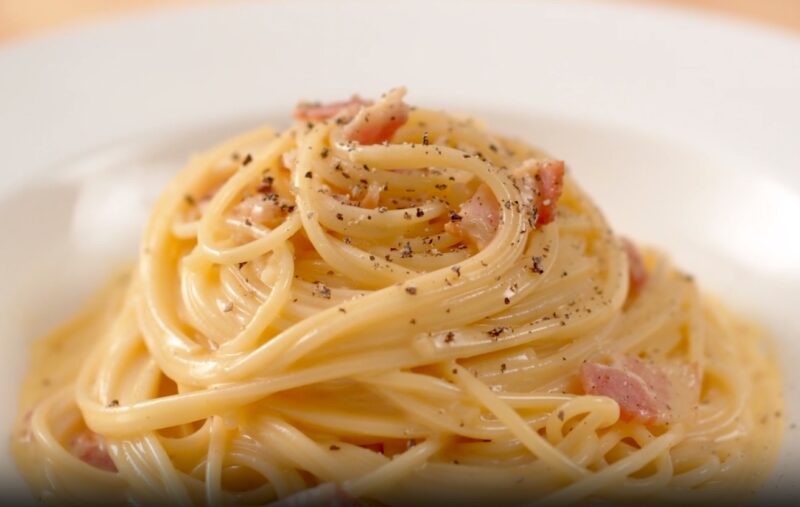
Italy’s cuisine is renowned for its comforting qualities, primarily through its pasta dishes. Spaghetti Carbonara, a Roman classic, combines simple ingredients like eggs, cheese, and pork to create a creamy, indulgent dish. Lasagna, with its layers of pasta, cheese, and meat, is a staple in Italian households, often reserved for special occasions and family gatherings.
| Recipe | Ingredients | Instructions |
|---|---|---|
| Spaghetti Carbonara |
|
|
| Lasagna |
|
|
British Standard

In the United Kingdom, comfort food is synonymous with hearty, filling meals. Shepherd’s pie, with its rich meat filling topped with a layer of mashed potatoes, is a traditional British dish offering warmth and satisfaction. Fish and chips, a national favorite, provide a simple yet deeply satisfying meal, especially when enjoyed in a cozy pub setting.
| Ingredient | Amount |
|---|---|
| Fried Eggs | 2 large eggs |
| Bacon | 4 slices of bacon |
| Sausages | 2 sausages |
| Grilled Tomatoes | 2 tomatoes, halved |
| Toast | 2 slices of bread |
| Baked Beans | 1 can of baked beans |
| Black Pudding (Optional) | Slices of black pudding |
| Mushrooms | A handful of mushrooms |
| Tea or Coffee | Preferably strong tea or coffee |
Indian Spicy Delights
India, with its diverse culinary landscape, offers a variety of comforting dishes. Biryani, a fragrant rice dish cooked with spices, meat, or vegetables, is a celebration in itself, often associated with festivities and family reunions. Butter chicken, with its creamy tomato sauce, represents the heart of North Indian cuisine, bringing warmth and rich flavors to the table.
East Asian Favorites
In East Asia, comfort food reflects the diverse culinary traditions of the region. Japanese ramen, with its rich broth and noodles, offers a comforting bowl of warmth, particularly popular in colder months. Korean bibimbap, a mix of rice, vegetables, and meat, is both a feast for the eyes and a comforting, nutritious meal. Chinese congee, a rice porridge, is a simple yet deeply comforting dish, often eaten for breakfast or during convalescence.
Middle Eastern Light and Healthy
Middle Eastern cuisine offers a variety of dishes that are both flavorful and comforting. Hummus, a creamy blend of chickpeas, tahini, and spices, is a staple in many households, often enjoyed with warm bread. Shawarma, with its spiced, grilled meat wrapped in a soft pita, is a popular street food offering a quick, satisfying meal.
Latin American Amazing Taste
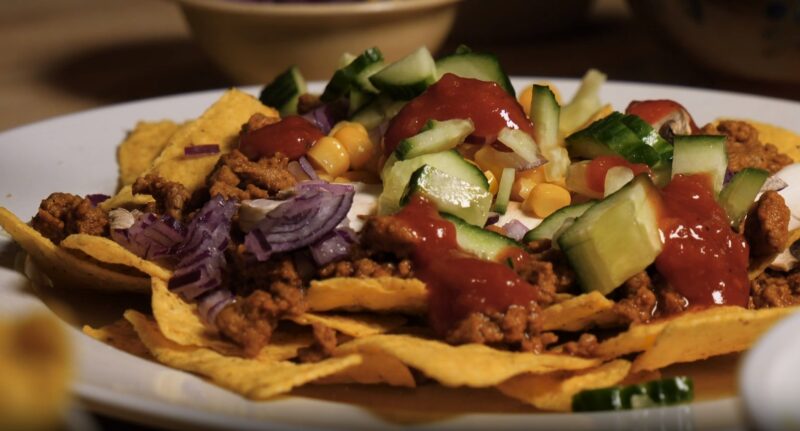
In Latin America, comfort food is characterized by its bold flavors and hearty ingredients. Tacos, with their endless variations, offer a customizable and deeply satisfying experience, embodying the spirit of Mexican cuisine. Empanadas, with their flaky pastry and savory fillings, are a comfort food enjoyed in many countries, from Argentina to Colombia.
African Wonders
The African continent, with its vast culinary diversity, presents a range of comforting dishes. Jollof rice, a one-pot rice dish popular in West Africa, is a celebration of flavor and often a centerpiece at gatherings. Injera with stews, a staple in Ethiopian cuisine, provides a unique eating experience, combining the spongy bread with flavorful stews.
| Component | Ingredients | Basic Recipe |
|---|---|---|
| Injera (Ethiopian Flatbread) | Teff flour, water, salt | Mix teff flour with water and let it ferment. Pour batter in a spiral onto a hot griddle. Cook until holes form on the surface, then remove. |
| Ethiopian Stew (e.g., Doro Wat) | Chicken pieces, onions, garlic, ginger, berbere spice, tomato paste, chicken stock, butter or oil, boiled eggs (optional) | Cook onions in butter or oil. Add garlic, ginger, and berbere spice. Stir in tomato paste. Add chicken and stock, simmer until cooked. Serve with boiled eggs if desired. |
Comfort Food in Modern Culture

The concept of comfort food has transcended the boundaries of mere sustenance and nostalgia to become a significant part of modern culture. In today’s fast-paced world, where stress and anxiety are common, these meals serve as an anchor, offering emotional stability and a sense of belonging. The role of these foods in contemporary life is multifaceted, reflecting changing social dynamics, media influence, and even economic trends.
- Media Influence and Pop Culture: Television shows, movies, and social media platforms have played a pivotal role in popularizing certain dishes. From the depiction of sumptuous pasta in an Italian movie to the viral spread of a comfort food recipe on Instagram, the media significantly influences our perceptions and cravings. These platforms have not only showcased traditional dishes but have also led to the reinvention of many, giving them a modern twist while retaining their comforting essence.
- Social Dynamics: In a world where social connections are increasingly digital, comfort food remains a tangible link to community and tradition. Potlucks, family gatherings, and social events often feature these familiar dishes, fostering a sense of unity and shared experience. In many cultures, preparing and sharing a meal is an expression of love and care, strengthening bonds between individuals.
- Economic and Health Trends: Economic fluctuations often see a rise in the consumption of comfort foods. During challenging times, people tend to gravitate towards these familiar dishes, which are often affordable and easy to prepare. However, there’s a growing awareness of health and nutrition, leading to a surge in the popularity of healthier versions of traditional comfort foods. This shift reflects a balance between seeking emotional comfort through food and maintaining physical well-being.
- Globalization and Fusion Cuisine: As the world becomes more interconnected, the fusion of different culinary traditions has given rise to new comfort foods. These innovative dishes combine elements from various cuisines, creating exciting flavors while providing the same level of comfort and satisfaction. This fusion not only enriches the culinary landscape but also promotes cultural exchange and understanding.
- Festivals and Celebrations: Many festivals and celebrations around the world are incomplete without certain traditional dishes. These foods are often steeped in history and symbolism, playing a crucial role in the observance of these occasions. They not only provide comfort but also serve as a reminder of cultural heritage and identity.
Healthy Alternatives to Traditional Dishes
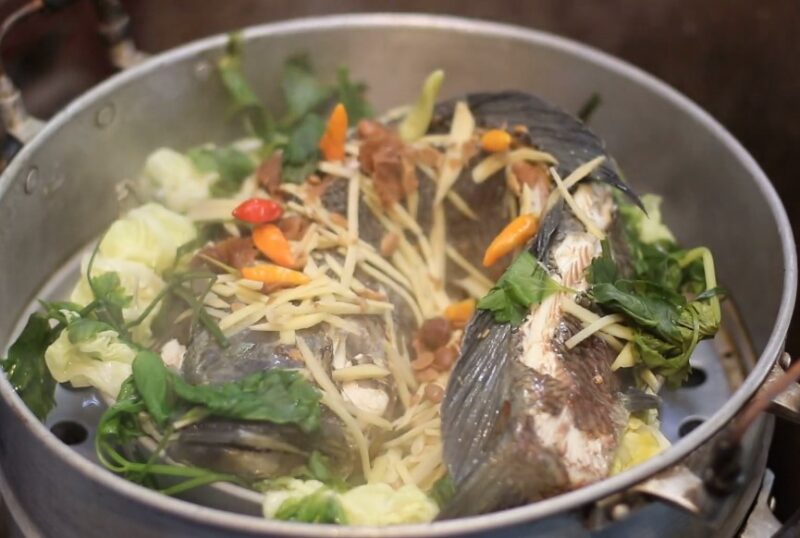
In recent years, there has been a growing movement towards creating healthier versions of classic dishes. This trend caters to those who seek the warmth and familiarity of their favorite meals but are also mindful of nutritional value and health impact.
The shift towards these alternatives does not compromise on taste; rather, it introduces innovative ways to enjoy traditional favorites with a health-conscious twist.
- Substituting Ingredients: One of the key strategies in making meals healthier is ingredient substitution. For example, using whole grain pasta instead of regular pasta adds fiber and nutrients. Similarly, incorporating plant-based proteins like lentils or tofu in place of meat not only reduces fat content but also caters to vegetarian and vegan diets. Dairy products can be replaced with their lower-fat or plant-based counterparts, maintaining creamy textures without the extra calories.
- Cooking Methods: How a meal is prepared plays a significant role in its healthiness. Baking or grilling instead of frying can significantly reduce the fat content of a dish. Steaming vegetables rather than boiling them preserves more of their nutrients. Using cooking sprays or a small amount of olive oil can prevent excess fat consumption without sacrificing flavor.
- Portion Control: Enjoying these dishes in moderation is as important as the ingredients used. Serving smaller portions can help manage calorie intake while still providing the satisfaction of indulging in a favorite meal. Pairing these portions with a fresh salad or steamed vegetables can make for a fulfilling and balanced meal.
- Incorporating Whole Foods: Emphasizing whole foods like fruits, vegetables, whole grains, and lean proteins is essential in creating healthier versions of classic dishes. These ingredients are not only nutritious but also add a variety of flavors and textures, making the meal more enjoyable and satisfying.
- Mindful Eating: Beyond the ingredients and preparation methods, mindful eating plays a crucial role in enjoying these meals healthily. Savoring each bite, eating slowly, and being present during the meal can enhance the dining experience, making it more satisfying and reducing the likelihood of overeating.
Comfort Food Recipes from Around the World
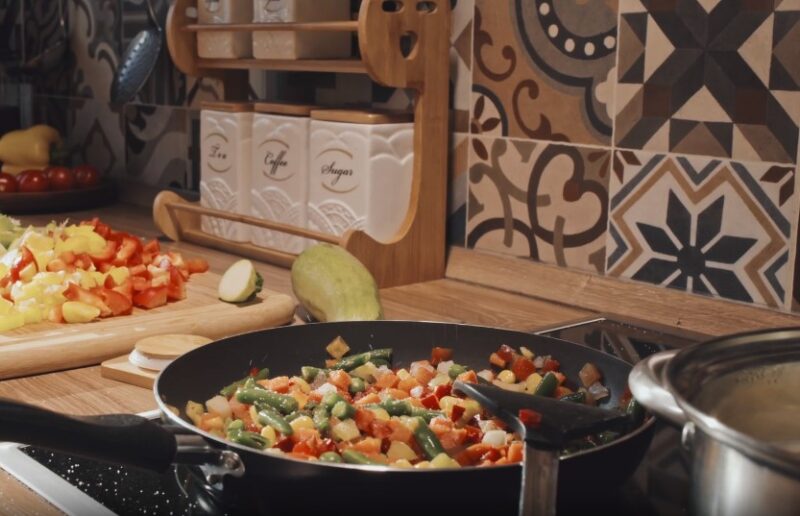
While we already mentioned some popular choices from different parts of the world, there are still many classics left to be represented. Here are some simple recipes that you can simply prepare even if you don’t have a lot of experience in the kitchen.
Spanish Paella
Paella is a vibrant, flavorful Spanish rice dish that has become a symbol of Spanish cuisine. It’s a versatile dish that can be adapted to include a variety of proteins and vegetables.
Ingredients:
- 2 cups Arborio rice
- 4 cups chicken broth
- 1 lb mixed seafood (shrimp, mussels, clams)
- 1/2 lb chicken, cut into pieces
- 1 red bell pepper, sliced
- 1 cup frozen peas
- 1 onion, chopped
- 2 cloves garlic, minced
- 1/2 cup tomato sauce
- Saffron threads
- Olive oil
- Salt and pepper
Instructions:
- In a large skillet, heat olive oil over medium heat. Add chicken pieces and cook until browned. Remove and set aside.
- In the same skillet, add onion, garlic, and bell pepper. Cook until soft.
- Add rice and saffron, stirring to coat the rice with the oil and vegetables.
- Pour in tomato sauce and chicken broth. Season with salt and pepper. Bring to a boil.
- Reduce heat to low and add the chicken back to the skillet. Cover and simmer for 20 minutes.
- Add the seafood and peas. Cover and cook for an additional 10 minutes or until the seafood is cooked through and rice is tender.
- Let it sit for a few minutes before serving.
Japanese Okonomiyaki
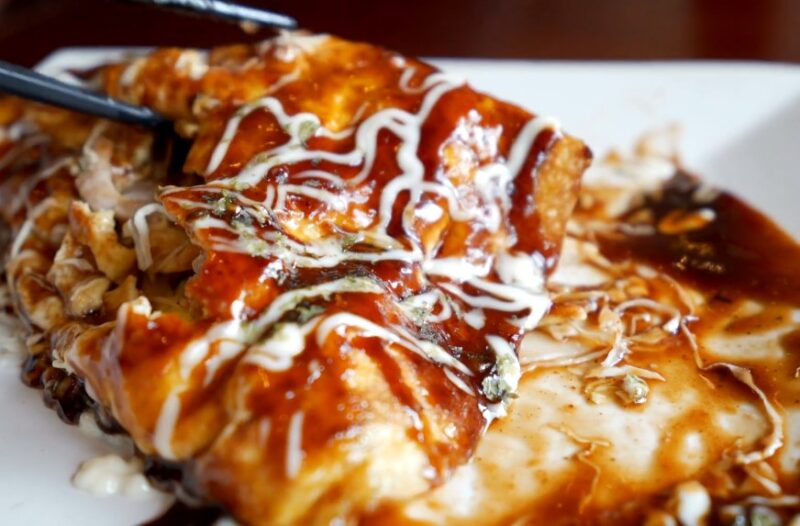
Okonomiyaki is a Japanese savory pancake, packed with various ingredients. The name literally means “grilled as you like it,” making it a versatile and fun dish.
Ingredients:
- 1 cup all-purpose flour
- 3/4 cup water
- 2 eggs
- 2 cups shredded cabbage
- 1/2 cup chopped green onions
- 1/2 cup cooked, chopped bacon or shrimp (optional)
- Okonomiyaki sauce
- Mayonnaise
- Dried seaweed flakes
- Bonito flakes
Instructions:
- In a large bowl, mix flour and water until smooth. Beat in the eggs.
- Add cabbage, green onions, and your choice of bacon or shrimp to the batter. Mix well.
- Heat a non-stick skillet over medium heat. Pour the batter into the skillet, forming a large, thick pancake.
- Cook for about 4-5 minutes on each side until golden brown and crispy.
- Transfer to a plate. Drizzle with okonomiyaki sauce and mayonnaise. Sprinkle seaweed and bonito flakes on top.
- Serve hot and enjoy this savory, customizable Japanese classic.
Mexican Quesadillas
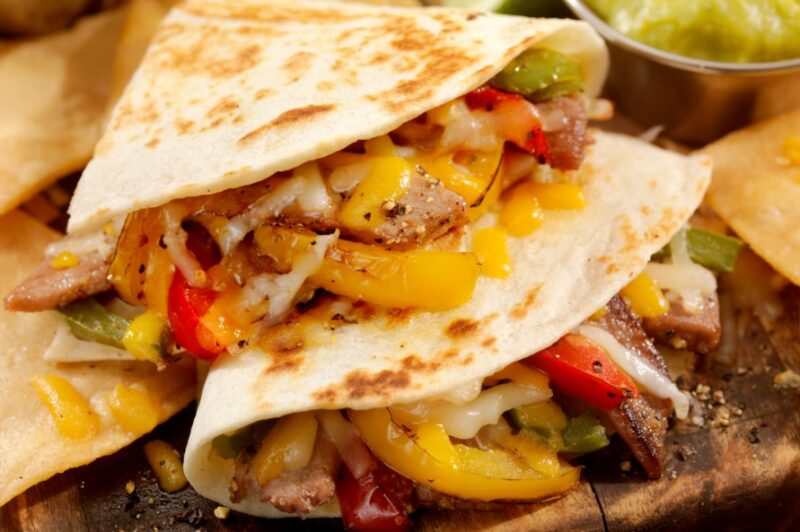
Quesadillas are a quick and easy Mexican dish perfect for a comfort meal with minimal effort. They consist of tortillas filled with cheese and often other ingredients, then grilled to achieve a deliciously crispy exterior and a gooey, melted interior.
Ingredients:
- 4 large flour tortillas
- 2 cups shredded cheese (such as cheddar, Monterey Jack, or a Mexican blend)
- 1 cup cooked chicken, shredded (optional)
- 1/2 cup black beans, drained and rinsed (optional)
- 1/2 cup corn kernels (optional)
- 1/2 cup diced bell peppers (optional)
- 1/2 cup diced onion (optional)
- 1/4 cup chopped cilantro (optional)
- Salsa, sour cream, or guacamole for serving
Instructions:
- Heat a large skillet or griddle over medium heat.
- Place a tortilla in the skillet. Sprinkle a quarter of the cheese evenly over the tortilla.
- Add your choice of additional fillings (chicken, black beans, corn, bell peppers, onion, cilantro) on top of the cheese. Be careful not to overfill.
- Place another tortilla on top. Cook for about 2-3 minutes until the bottom tortilla is golden brown and crispy.
- Carefully flip the quesadilla and cook for another 2-3 minutes on the other side, ensuring the cheese is melted and the other tortilla is golden brown.
- Remove from the skillet and let it cool for a minute. Then, cut into wedges.
- Serve with salsa, sour cream, or guacamole on the side.
Fusion of Comfort and Traditional
Fusion cuisine brings an exciting twist to traditional comfort dishes by blending flavors from different cultures. Imagine the spicy kick of kimchi mixed into creamy mac and cheese, or a classic shepherd’s pie infused with aromatic curry spices.
These innovative combinations create a unique dining experience that both comforts and surprises the palate. Sushi burritos, for example, combine the convenience of a burrito with the delicate flavors of sushi, offering a novel and enjoyable way to experience both Japanese and Mexican cuisines.
Diet and Nutrition
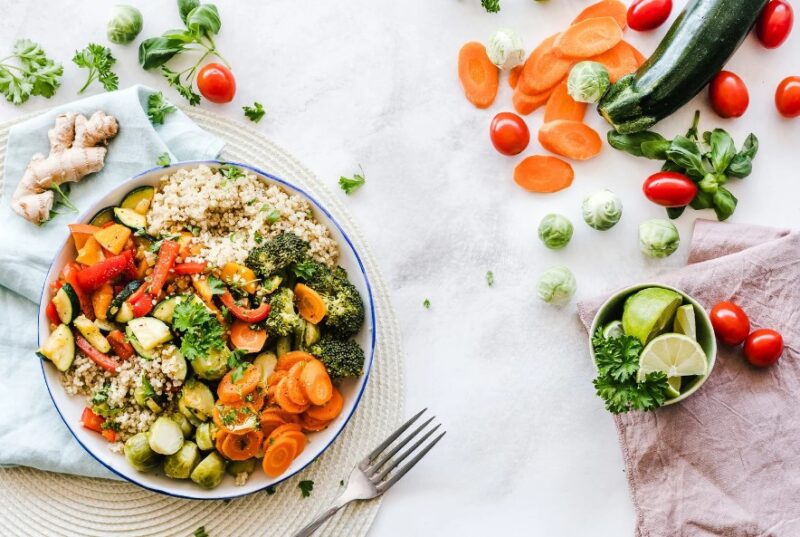
Maintaining a balance between the indulgence of comfort dishes and nutritional needs is essential. Small modifications can transform these hearty meals into healthier options without sacrificing flavor.
For instance, using whole grain ingredients, lean meats, or adding a variety of vegetables can enhance the nutritional value of these dishes. Including comfort foods as part of a diverse diet, complemented by other food groups, allows for enjoyment without nutritional compromise.
Sustainability
Preparing comfort dishes with sustainability in mind is increasingly important. Choosing local and seasonal ingredients not only supports local economies but also reduces the environmental impact.
Similarly, adopting practices like composting food scraps or using energy-efficient cooking methods contributes to a more sustainable kitchen. Chefs focusing on sustainable cooking practices are leading the way, showing how our favorite dishes can be both delicious and environmentally conscious.
FAQs
How do comfort foods change with age and life stages?
As people age and go through different life stages, their comfort foods can change. This shift often reflects changes in lifestyle, dietary needs, and exposure to different cultures and cuisines. For instance, a person might gravitate towards simpler, lighter dishes as they grow older, or after traveling, they might incorporate elements from international cuisines into their comfort food repertoire.
Can comfort foods have psychological benefits beyond just feeling good?
Yes, comfort foods can have psychological benefits such as reducing feelings of loneliness and anxiety. They can trigger positive memories, providing a sense of familiarity and security which can be psychologically reassuring. However, it’s important to maintain a balance and not solely rely on food for emotional well-being.
Are there any trends in comfort foods becoming more health-conscious globally?
There is a growing global trend towards health-conscious comfort foods. This movement sees traditional recipes being modified with healthier ingredients, such as using whole grains, lean proteins, and increasing the proportion of vegetables. This shift reflects a broader societal focus on health and wellness.
How has the globalization of food influenced traditional comfort dishes?
The globalization of food has led to a blending of culinary traditions, introducing new ingredients and cooking techniques to traditional comfort dishes. This has resulted in a fusion of flavors and the creation of new comfort dishes, reflecting a blend of different cultural influences. It has made traditional comfort foods more accessible globally, allowing for a cross-cultural exchange of culinary traditions.
Summary
In modern times, comfort dishes have adapted to changing lifestyles, dietary preferences, and global influences. The fusion of traditional recipes with new flavors, the emphasis on healthier alternatives, and the growing awareness of sustainability in cooking show the dynamic and evolving nature of these meals.
Yet, the essence of what makes them comforting remains the same – their ability to provide a warm embrace through food, no matter where we are in the world.

